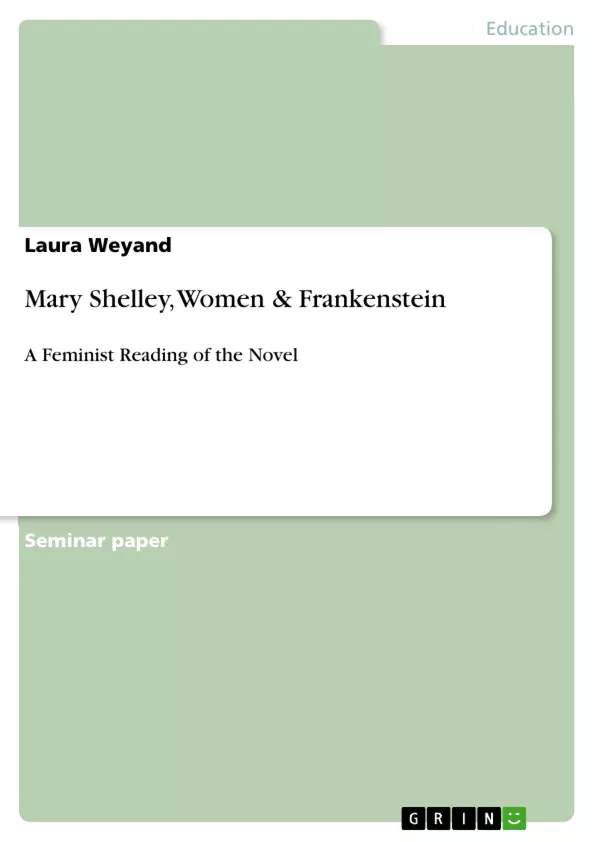For a better understanding of the main part of this term paper, firstly, the predominant
doctrine of separate spheres will be introduced and sufficiently explained. Likewise a short
overview of the situation of women from the 19th century will be given in this chapter. Further
on it will then be demonstrated how Mary Shelley coped with the fact of being a female
writer in a male dominated society and how she managed her life. Afterwards it will be
looked at all women, appearing in the novel Frankenstein, and how Shelley presents them. In
addition it will be analysed in what way Shelley displays critique of the gender division and
the patriarchal society. Finally, the results of the analysis of the novel will be summarised.
Table of Contents
- Introduction
- Gender Roles or the Concept of Separate Spheres
- Between the Public and the Private Sphere
- The Life of Mary Shelley
- The Representation of Women in Frankenstein
- Frankenstein - A Critique of the 19th Century Patriarchal Society
- Conclusion
- List of Works Cited
Objectives and Key Themes
This term paper analyzes the role of women and the ideology of separate spheres in Mary Shelley's novel *Frankenstein*. The paper examines how the novel presents women within the context of 19th century society, specifically exploring the expectations and limitations imposed upon women in the domestic sphere. It also analyzes how Mary Shelley, as a female writer, challenged these societal norms in both her life and her work.- The concept of separate spheres and its impact on 19th century women
- The representation of women in *Frankenstein* and their conformity to societal expectations
- Mary Shelley's life as a female writer and her defiance of traditional gender roles
- The novel's critique of patriarchal society and its implications for gender equality
- The significance of *Frankenstein* as a Female Gothic novel
Chapter Summaries
Introduction
The introduction establishes the focus of the term paper, which is to analyze the significance of gender roles and the concept of separate spheres in Mary Shelley's *Frankenstein*. The paper argues that while the novel may not explicitly address issues of gender, it implicitly critiques the prevailing social order and the limitations imposed upon women. The introduction also defines the genre of the novel as Female Gothic and discusses the lack of a traditional heroine in *Frankenstein*.Gender Roles or the Concept of Separate Spheres
This chapter explores the concept of separate spheres, which dictated the distinct roles and responsibilities of men and women in 19th century England. It examines the limited opportunities available to women, their legal subordination, and the idealized image of the "Angel of the House." The chapter highlights how this concept confined women to the domestic sphere, while men occupied the public sphere, with access to education and careers.Between the Public and the Private Sphere
This section delves into the life and work of Mary Shelley, highlighting her defiance of the prevailing social norms. It also examines the representation of women in *Frankenstein*, analyzing how they conform to the expectations of their time. The chapter further investigates how Shelley's novel critiques the patriarchal society and its gender division of labor.- Citation du texte
- Laura Weyand (Auteur), 2012, Mary Shelley, Women & Frankenstein, Munich, GRIN Verlag, https://www.grin.com/document/267014



